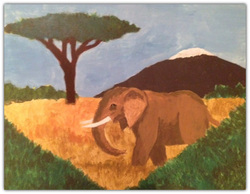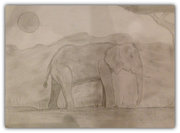“Unless someone like you cares a whole awful lot,
nothing is going to get better, it’s not.”
-Dr. Seuss, The Lorax
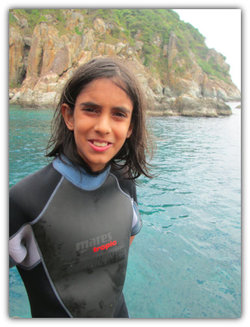 Kabir
Kabir Over the Tet (Vietnamese New Year) holiday, my family and I took a trip to Nha Trang, Vietnam. While we were there we went snorkeling, which was so fun. But this article isn’t just about me going on vacation for you to read about. This article, and the marine preserve we went to, shows that even though Vietnam doesn’t have the best record when it comes to taking care of its wildlife, it is doing some things to protect its creatures. If it’s possible for Vietnam to help this marine preserve, then maybe they can do the same for all their other ecological problems.
The island we swam around is called Hon Mun. Hon Mun is also the name of the protected reef. Hon Mun Marine Preserve was the first marine conservation project in Vietnam, which started in 2001. It was designated to be a reserve in 1993, and their mission is to conserve coral reef biodiversity, encourage tourism that doesn’t damage the ecosystem, and promote sustainable fishing. We were swimming on a corner of the island called Mushroom Bay. The reason it’s called that is because the coral looks very much like mushrooms.
The island we swam around is called Hon Mun. Hon Mun is also the name of the protected reef. Hon Mun Marine Preserve was the first marine conservation project in Vietnam, which started in 2001. It was designated to be a reserve in 1993, and their mission is to conserve coral reef biodiversity, encourage tourism that doesn’t damage the ecosystem, and promote sustainable fishing. We were swimming on a corner of the island called Mushroom Bay. The reason it’s called that is because the coral looks very much like mushrooms.
We went by boat to the island. Our guide told us not to touch any of the fish, because they might bite. He also told us to not take the coral, for it is a huge problem and is endangering the reef. Hon Mun has over 350 species of coral, out of the 800 that exist on earth. They have 230 species of fish, 122 species of mollusks, and 112 twelve species of crustaceans.
We arrived on the bay, and it was not yet very sunny. I put my wetsuit on, and jumped in. The water was very pleasant, but it took some getting used to. After I got used to it though, I went on my belly and started to snorkel, and the life I saw down there was beautiful. It was blue, and about 5 meters down were all the fish of many different kinds. I saw striped fish, spotted fish, clown fish, parrotfish (which have beaks like parrots), and so many other things. Sea stars, urchins, and sea shells. And swimming through the water was like flying.
The coral on the bottom was very big, and there were so many different kinds. Some of them looked like mushrooms, and one big one looked like a volcano with tons of wrinkles. I saw some brain coral, which looked very creepy.
We arrived on the bay, and it was not yet very sunny. I put my wetsuit on, and jumped in. The water was very pleasant, but it took some getting used to. After I got used to it though, I went on my belly and started to snorkel, and the life I saw down there was beautiful. It was blue, and about 5 meters down were all the fish of many different kinds. I saw striped fish, spotted fish, clown fish, parrotfish (which have beaks like parrots), and so many other things. Sea stars, urchins, and sea shells. And swimming through the water was like flying.
The coral on the bottom was very big, and there were so many different kinds. Some of them looked like mushrooms, and one big one looked like a volcano with tons of wrinkles. I saw some brain coral, which looked very creepy.
Did you know that coral is an animal? A lot of people think coral are just underwater plants, like seaweed. But that's not true. Coral is made up thousands of tiny creatures called polyps. They work together and form a super hard exoskeleton of limestone. Then they look as if they are a plant, because after forming an exoskeleton they are sessile, which means they are immobile and attach to the dead coral or rocks on the ocean floor. The polyps use tiny tentacles to get food from the water, and throw into their mouths. The polyps grow, then die, and this happens over and over again, producing more limestone, creating giant reefs. Coral can even make the largest natural structures in the world.
But coral has a lot of threats. About ¼ of all of the world’s coral reefs are completely destroyed, and about ⅔ are in severe danger. Dynamite fishing (using dynamite to kill the fish for easy pickup) and cyanide fishing (spraying chemicals in the water to stun the fish for collection) are a huge threat to not only fish, but coral too. Too much fishing leads to an unbalanced food chain, and there are no fish to clean the coral. Non-ecologically friendly tourism is a big problem. Tourists who dive or snorkel and take things from the reef affect the ecosystem, and anchors are often dropped right on the reefs. Pollution is another HUGE problem. A lot of the chemicals that people dump in the water poison the reefs. Some pollutants are filled with nitrogen, which can cause algae to grow at an alarming rate, stopping sunlight from reaching the coral. Erosion from construction can also surround the coral, blocking the sunlight. Taking live coral from the reefs is extremely harmful. They are made into bricks and concrete, and are sold to tourists who are unaware of how this trade hurts the marine life. And global warming affects the coral reefs, because coral cannot live in water that is too high in temperature.
Hon Mun Marine Preserve has a done a lot of things to preserve and protect the coral and to educate people about it. They have conducted surveys about the health of the marine life, they have identified and recorded new species of fish and coral, they have trained local villagers to keep track of the coral’s health. They are monitoring the reef habitat. They have identified the problems that Hon Mun has and is trying to fix them.
We came back on the the boat, and we headed off to another place to snorkel. I preferred this place to the other, and we stayed there longer. The sun came out, and the water was even more clear and blue, I could see the reef bottom from the boat. When I jumped in, I saw all the beautiful table coral, which is absolutely enormous. The reason it’s called table coral is because, well, it looks like a big flat table.
But coral has a lot of threats. About ¼ of all of the world’s coral reefs are completely destroyed, and about ⅔ are in severe danger. Dynamite fishing (using dynamite to kill the fish for easy pickup) and cyanide fishing (spraying chemicals in the water to stun the fish for collection) are a huge threat to not only fish, but coral too. Too much fishing leads to an unbalanced food chain, and there are no fish to clean the coral. Non-ecologically friendly tourism is a big problem. Tourists who dive or snorkel and take things from the reef affect the ecosystem, and anchors are often dropped right on the reefs. Pollution is another HUGE problem. A lot of the chemicals that people dump in the water poison the reefs. Some pollutants are filled with nitrogen, which can cause algae to grow at an alarming rate, stopping sunlight from reaching the coral. Erosion from construction can also surround the coral, blocking the sunlight. Taking live coral from the reefs is extremely harmful. They are made into bricks and concrete, and are sold to tourists who are unaware of how this trade hurts the marine life. And global warming affects the coral reefs, because coral cannot live in water that is too high in temperature.
Hon Mun Marine Preserve has a done a lot of things to preserve and protect the coral and to educate people about it. They have conducted surveys about the health of the marine life, they have identified and recorded new species of fish and coral, they have trained local villagers to keep track of the coral’s health. They are monitoring the reef habitat. They have identified the problems that Hon Mun has and is trying to fix them.
We came back on the the boat, and we headed off to another place to snorkel. I preferred this place to the other, and we stayed there longer. The sun came out, and the water was even more clear and blue, I could see the reef bottom from the boat. When I jumped in, I saw all the beautiful table coral, which is absolutely enormous. The reason it’s called table coral is because, well, it looks like a big flat table.
The most interesting fish I saw here was the butterfly fish. The other bay had some, but here there were hundreds swimming in pairs.They are flat, very small, and have stripes running down their sides. They are very interesting fish though, because they always stay in a pair of two, a male and a female. If anything should happen to the female though, the male actually turns into a female! It’s amazing. She will then go off and find a male to hang out with.
After a bit more snorkeling, we got back on the boat and headed back to shore. I had a lot to think about.
This marine preserve may it be a bit polluted (we saw some plastic bags and cans floating in the water), but it shows that in Vietnam, even though a lot of the wildlife is not doing great, it can get better. Mon Hun used to have horrible problems, like extensive fishing, huge tourist attractions, and even dynamite fishing. But Hon Mun is now one of the most beautiful spots in Vietnam, and one of the most beautiful places I have ever seen. If Vietnam can do the same thing for many more of their environmental problems as they have done for Hon Mun, the wildlife of Vietnam could have a brighter future.
This marine preserve may it be a bit polluted (we saw some plastic bags and cans floating in the water), but it shows that in Vietnam, even though a lot of the wildlife is not doing great, it can get better. Mon Hun used to have horrible problems, like extensive fishing, huge tourist attractions, and even dynamite fishing. But Hon Mun is now one of the most beautiful spots in Vietnam, and one of the most beautiful places I have ever seen. If Vietnam can do the same thing for many more of their environmental problems as they have done for Hon Mun, the wildlife of Vietnam could have a brighter future.
Sources:
http://www.nhatrangbaympa.vnn.vn/index_en.htm
http://oceanservice.noaa.gov/facts/coral.html
http://www.alotrip.com/guide-vietnam-attractions/hon-mun-marine-park
http://wwf.panda.org/about_our_earth/blue_planet/coasts/coral_reefs/coral_threats/
http://www.climate.vn/wildlife-in-vietnam-is-endangered-despite-biodiversity.html
http://www.nhatrangbaympa.vnn.vn/index_en.htm
http://oceanservice.noaa.gov/facts/coral.html
http://www.alotrip.com/guide-vietnam-attractions/hon-mun-marine-park
http://wwf.panda.org/about_our_earth/blue_planet/coasts/coral_reefs/coral_threats/
http://www.climate.vn/wildlife-in-vietnam-is-endangered-despite-biodiversity.html
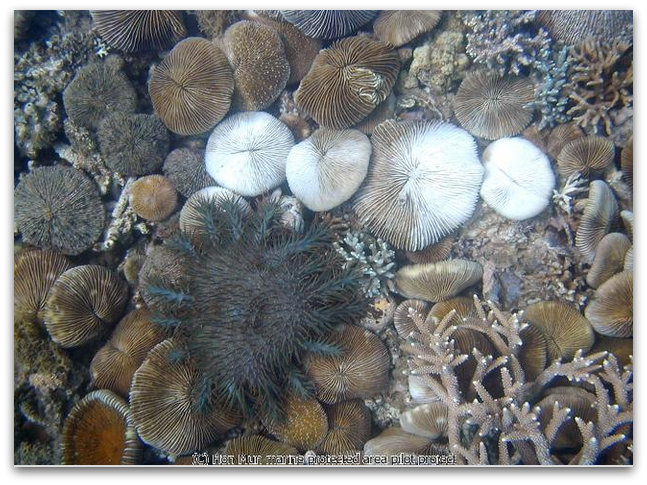
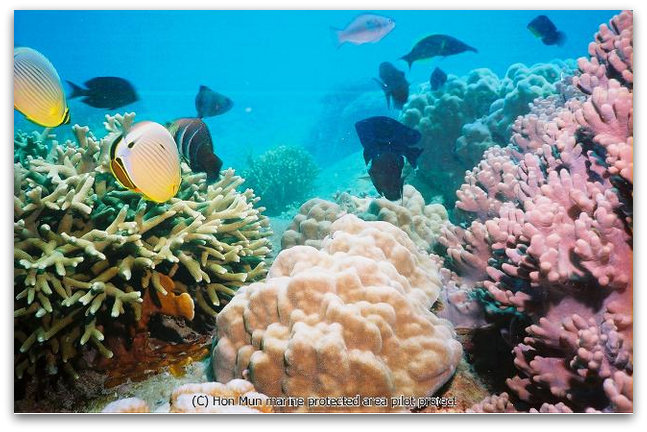
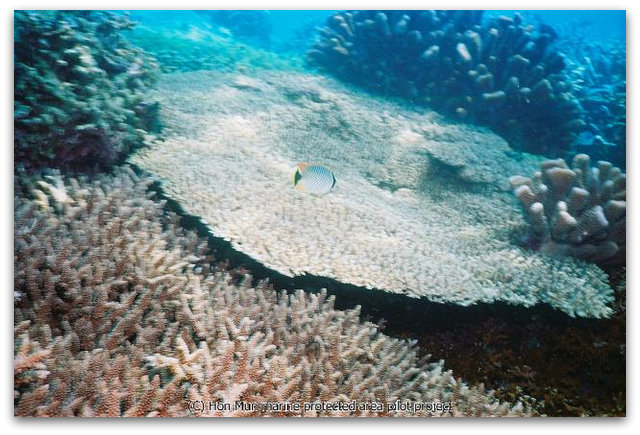
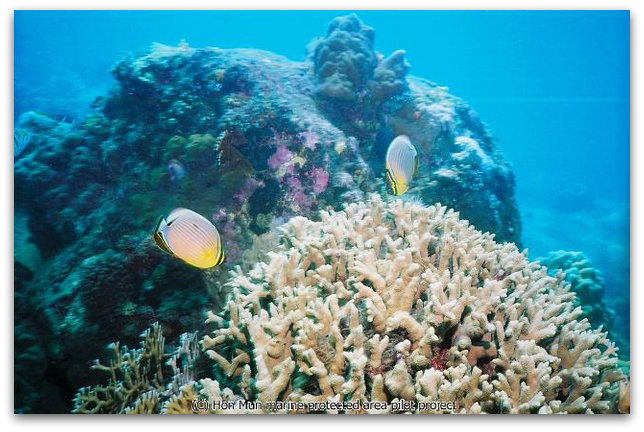
 RSS Feed
RSS Feed
